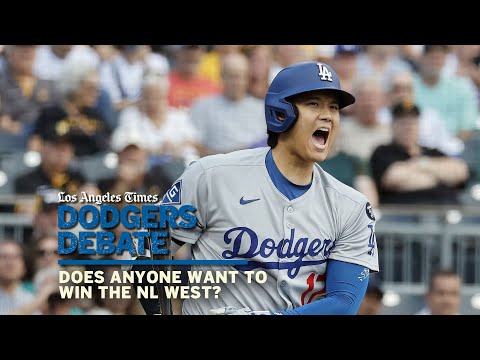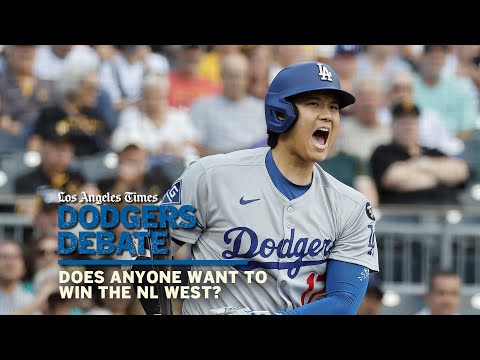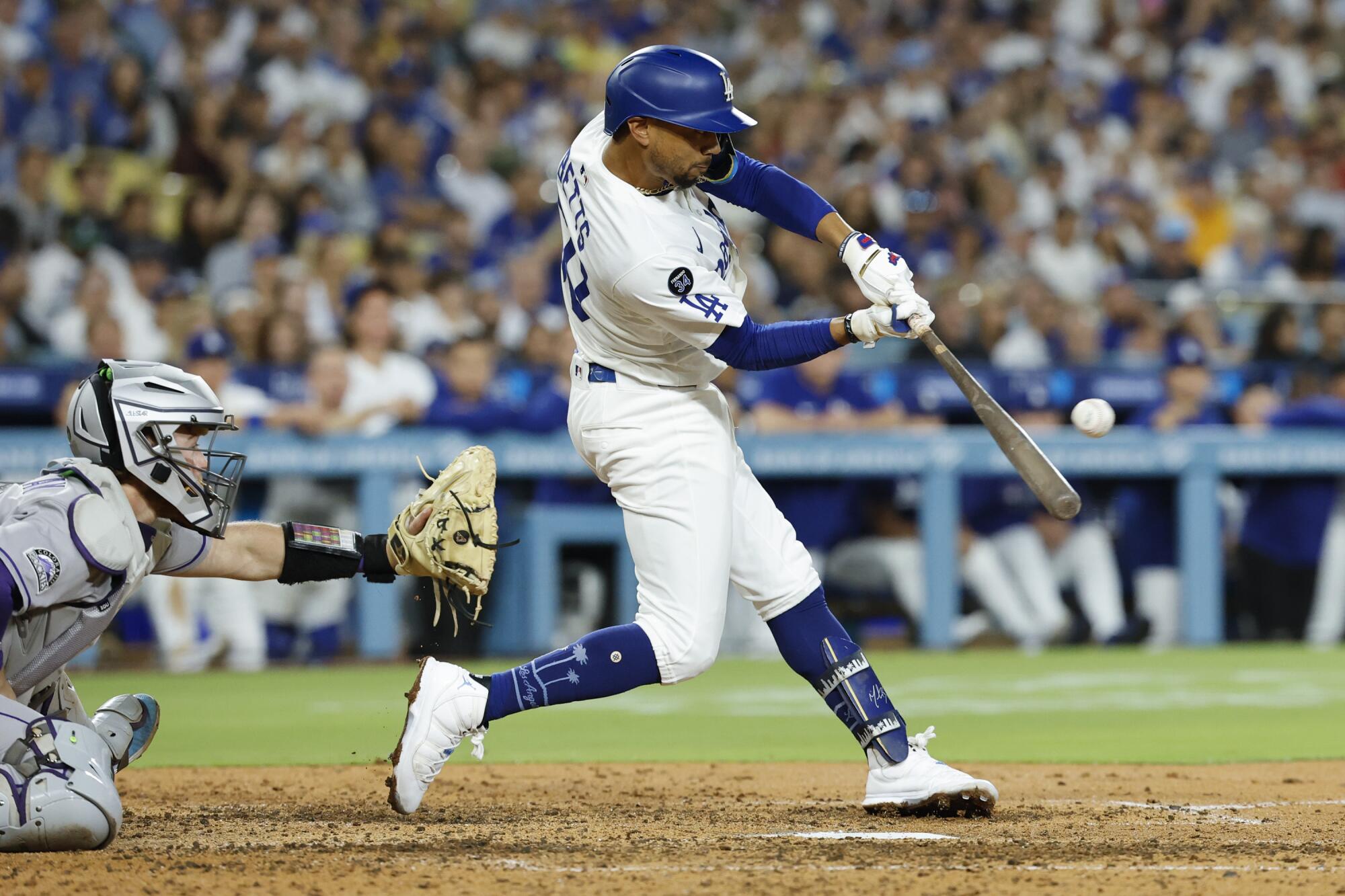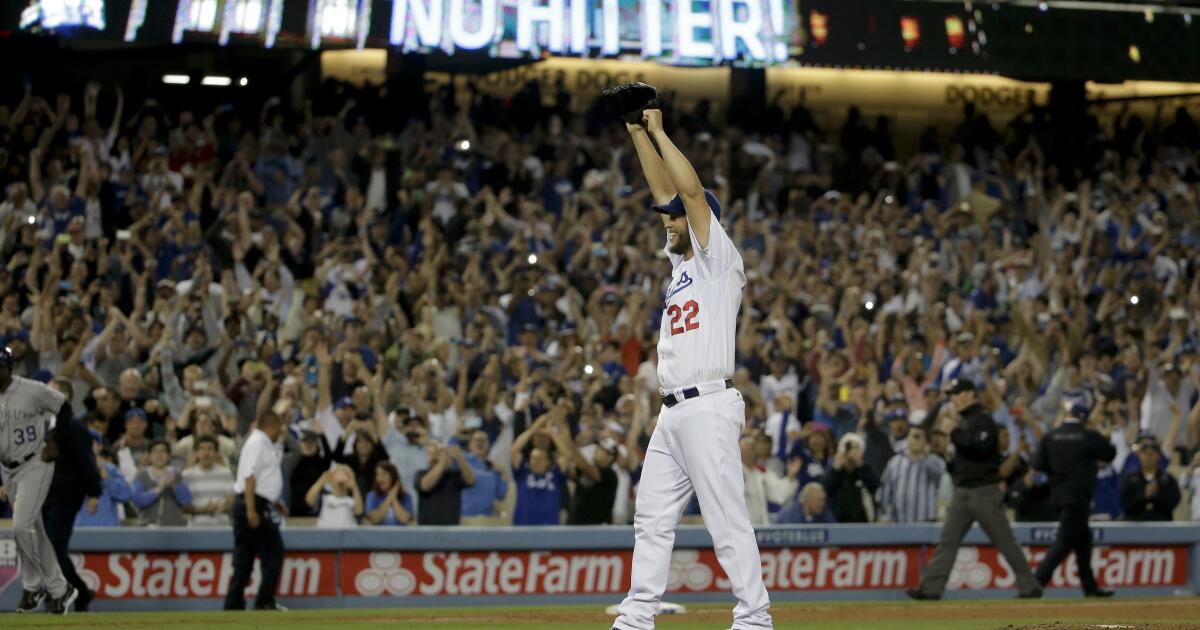Can starting pitching carry the burden for the Dodgers in October?
In almost any other season, Dave Roberts might have made a different choice.
Even though Tyler Glasnow was pitching a no-hitter, Roberts would have at least considered removing the right-hander after six innings on Monday night.
Glasnow’s pitch count was already at 91.
This season is unlike any other, however. Up is down, down is up, and the Dodgers can’t rely on their bullpen.
The uncharacteristic problem required an uncharacteristic solution from Roberts, who kept Glasnow in the game.
What was most important about the series-opening 3-1 win over the Colorado Rockies wasn’t that Glasnow kept a no-hitter intact for another inning or that human propane tank Tanner Scott blew it by giving up a double to Ryan Ritter in the ninth.
Rather, the most promising development of the night was that Glasnow completed seven innings and threw 105 pitches.
Starts like this will be necessary for the Dodgers to overcome their most obvious weakness. Starts like this will be indispensable in their quest to repeat as champions.
For the Dodgers to have a chance to win another World Series, they will have to lean more than usual on their starting pitching.
“I do think that there’s certain times, if [the starters] give me the opportunity as far as efficiency and how their stuff is playing, to push them a little more,” Roberts said.
Roberts is already pushing them.
Two days earlier in Baltimore, Roberts granted Yoshinobu Yamamoto a chance to complete a no-hitter. Yamamoto came up short by an out.
Glasnow has completed seven innings in each of his last two starts.
“Those things are going to be good going forward,” Roberts said.
As much as Roberts continues to champion his relievers — “I believe in them,” he insisted — the reality is that the Dodgers’ bullpen ranks 19th in the majors in earned-run average entering play Tuesday. The less Roberts has to call on that group, the better.
Scott, the team’s $72-million closer, has a 4.47 ERA. Kirby Yates, another questionable offseason acquisition, is even worse at 4.71.
Blake Treinen was a postseason hero last year but he was sidelined for more than three months with a forearm sprain and has struggled with consistency since his return.
The only addition made to the bullpen at the trade deadline was Brock Stewart, who is on the injured list.
The situation could force the Dodgers to move away from the kind of bullpen-heavy game plans they have used in recent years and turn back the clock to the days when their starters accounted for an overwhelming majority of their innings.
Since the start of August, the Dodgers are second in the majors in innings pitched by their starters. Their starters have a combined ERA of 3.31 in that period, also second-best in the majors.
The Dodgers are expected to have four pitchers in their playoff rotation, and they have five legitimate candidates for those positions in Yamamoto, Blake Snell, Shohei Ohtani, Glasnow and Clayton Kershaw.
But pitching deep into a postseason game isn’t the same as pitching deep into a regular-season game. Snell and Glasnow have each started 10 playoff games. Snell didn’t complete six innings in any of them. Glasnow did it only twice.
Yamamoto crossed the sixth-inning threshold once in four postseason starts last year, as he pitched into the seventh inning against the New York Yankees in Game 2 of the World Series.

Kershaw’s last six-inning start in the playoffs was in 2020. Ohtani has never pitched in the playoffs, and the most he has pitched this season is five innings.
The pitching staff’s composition could lead to hard decisions for Roberts in October.
Yamamoto, Snell and Glasnow have each averaged 4 ⅔ innings in their postseason starts. If, say, Snell runs into trouble in the fifth inning of a playoff game, what should Roberts do? Could he trust this particular group of relievers to cover the last four-plus innings of a game? Would Snell be the more reliable option to record the final outs of the inning? Or would either choice lead to disaster?
There’s potential for irony. The manager previously second-guessed for removing starting pitchers too early could now come under scrutiny for leaving them in too long.



